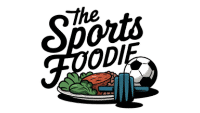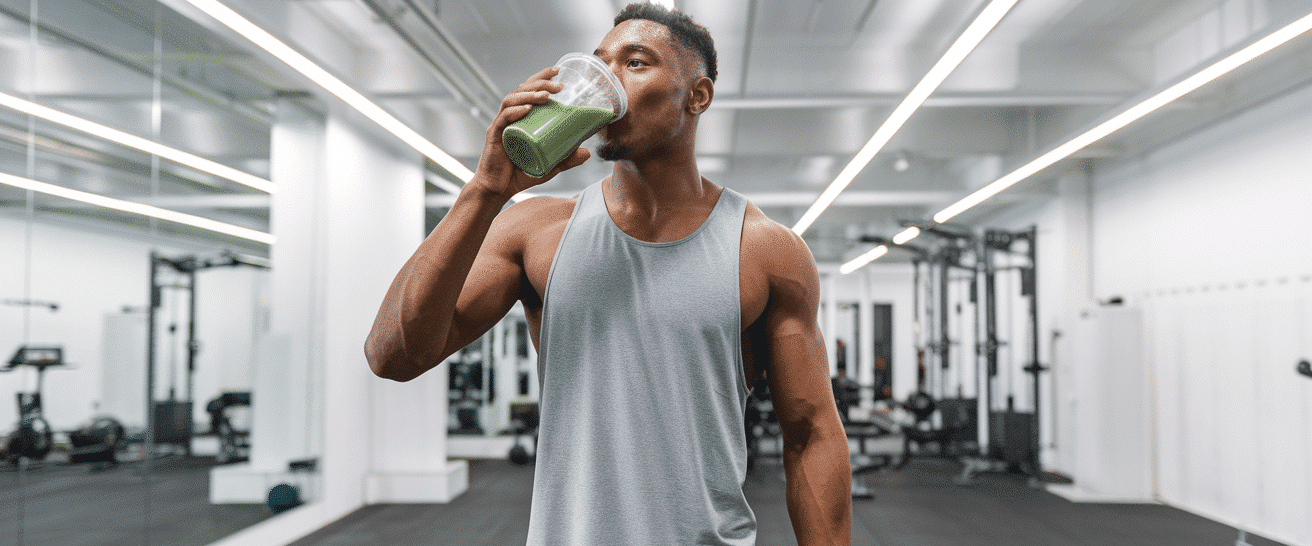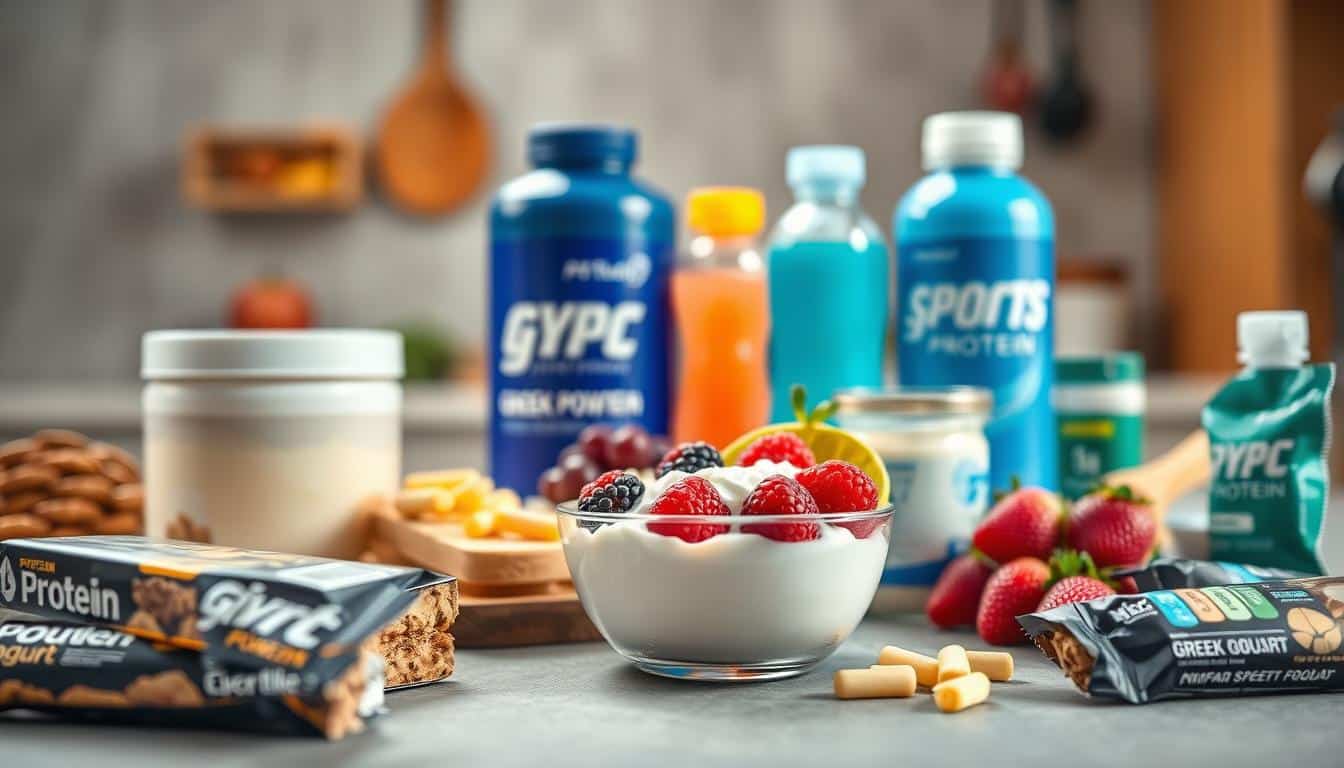Active teens face a unique challenge: balancing intense training with their growing bodies. Proper nutrition plays a key role in helping them perform their best while supporting physical development. Young athletes often require more fuel than their peers, especially when it comes to protein intake.
Experts recommend about 0.7 grams of protein per pound of body weight daily for active teens. This guideline ensures they have the building blocks for muscle repair and growth. But it’s not just about protein—balancing it with carbs and fats is essential for optimal results.
By focusing on sports nutrition, you can help your teen athlete thrive both on and off the field. Let’s dive into how to make this happen!
Why Protein is Essential for Teen Athletes
Fueling your body right is key to staying strong and active. When you train hard, your muscles go through a lot. They need the right nutrients to repair and grow. This is where protein steps in as your body’s repair crew.

The Role of Protein in Muscle Growth and Recovery
After a tough workout, your muscle fibers experience tiny tears. Protein helps rebuild these fibers, making them stronger. Amino acids like leucine play a big role in this process. They signal your body to start repairing and building new muscle tissue.
Eating enough protein can also reduce soreness. It helps you recover faster between practices or games. This means you’re ready to perform at your best every time.
How Protein Supports Overall Athletic Performance
Protein isn’t just about recovery—it’s also about energy. During endurance activities, your body uses protein to maintain strength. It works alongside carbs and fats to keep you going.
Think of it like this: protein is the foundation of your performance. It supports your muscles, keeps you energized, and helps you stay consistent in your training.
Understanding Protein Needs for Adolescent Athletes
Teens who train hard have unique nutritional demands compared to their peers. While all teens need nutrients for growth, those involved in sports require more to support their active lifestyles. This is especially true during puberty, when the body is rapidly changing.
Active teens typically need 10-30% of their daily calories from protein, while non-athletes require only about 10%. This difference ensures they have enough fuel for muscle repair and growth. Factors like age, weight, and the intensity of physical activity also play a role in determining these needs.
How Protein Requirements Differ from Non-Athletes
Sedentary teens have lower nutritional demands compared to young athletes. For example, a teen who isn’t active might need only 0.4 grams of protein per pound of body weight. In contrast, an athlete might need up to 0.7 grams per pound.
During puberty, the body’s demand for nutrients increases significantly. This is a critical time for bone and muscle development, making proper nutrition even more important for active teens.
Factors Influencing Protein Needs
Several factors determine how much protein a teen athlete requires. These include their age, weight, and the intensity of their physical activity. For example, a 120-pound soccer player might need 84 grams of protein daily during tournament weeks.
Here’s a simple formula to calculate daily protein needs: multiply your weight in pounds by 0.7. This gives you a baseline for how much protein to aim for each day.
| Activity Level | Protein Requirement (grams per pound) |
|---|---|
| Sedentary | 0.4 |
| Moderately Active | 0.5 |
| Highly Active | 0.7 |
By understanding these factors, you can better meet the nutritional needs of young athletes. This ensures they stay strong, healthy, and ready to perform at their best.
Daily Protein Intake Recommendations
Getting the right amount of fuel daily is crucial for young sports enthusiasts. Whether you’re hitting the field or the gym, understanding your needs helps you stay strong and recover faster. Let’s break it down.
How Much Is Needed Per Day
Experts suggest about 0.7 grams of protein per pound of body weight daily. For example, a 100-pound athlete needs around 70 grams per day, while a 150-pound individual requires about 105 grams. This ensures you have enough to repair and build muscle.
Calculating Based on Body Weight
Here’s a simple way to figure it out: multiply your weight in pounds by 0.7. This gives you a baseline for your daily intake. Use this formula to stay on track.
| Weight (lbs) | Protein (grams) |
|---|---|
| 100 | 70 |
| 150 | 105 |
| 200 | 140 |
Avoid extreme diets that exceed 2 grams per pound. Too much can strain your body and lead to unwanted weight gain. Balance is key.
Tracking your intake is easy. Use food labels or apps to log your meals. For example, three eggs at breakfast provide about 18 grams, while a chicken breast at dinner adds 24 grams. Small steps add up!
Balancing Protein with Other Macronutrients
Nutrition is more than just one nutrient—it’s about balance. While protein is essential for muscle repair, it’s only part of the equation. Your body also relies on carbohydrates and fats to function at its best.
The Importance of Carbohydrates and Fats in an Athlete’s Diet
Carbs are your body’s primary source of fuel. They give you the energy to power through workouts and competitions. Without enough carbs, your body may start using protein for energy, which reduces its ability to repair and build muscle.
Fats play a crucial role too. They support hormone production and help your body absorb essential vitamins. Together, these macronutrients ensure you have the total energy needed to perform and recover.
Why Protein Alone Isn’t Enough for Optimal Performance
Think of carbs as the gasoline that lets protein do its repair work. If you skip carbs, your body struggles to use protein effectively. This can lead to slower recovery and reduced performance.
Here’s a simple way to balance your plate:
- Fill half with veggies for vitamins and minerals.
- Add a quarter of lean protein for muscle repair.
- Include a quarter of whole grains for sustained energy.
This approach ensures you’re fueling your body with a well-roundeddiet.
Best Protein Sources for Teen Athletes
Finding the right fuel can make all the difference in your performance. Whether you’re training for a big game or hitting the gym, the foods you choose matter. Let’s explore the best options to keep you strong and energized.
Animal-Based Options
Animal-based sources are packed with high-quality nutrients. Eggs top the list for bioavailability, meaning your body absorbs them easily. Milk and yogurt are great for recovery, with one cup of Greek yogurt offering 18-22 grams. Lean meats like chicken and turkey provide about 24 grams per 3-ounce serving. Fish, such as salmon or tuna, is another excellent choice.
Here’s a quick comparison of popular animal-based options:
| Food | Protein (grams) |
|---|---|
| Eggs (2 large) | 12 |
| Greek Yogurt (1 cup) | 18-22 |
| Chicken Breast (3 oz) | 24 |
| Salmon (3 oz) | 22 |
Plant-Based Options
If you prefer plant-based foods, there are plenty of great choices. Beans, lentils, and chickpeas are rich in nutrients. Pair them with rice or quinoa for a complete protein. Nuts and seeds, like almonds and chia seeds, are perfect for snacks. For vegan athletes, blending silken tofu into smoothies is a smart way to boost intake.
Here are some easy plant-based combos:
- Rice and beans
- Hummus with whole-grain pita
- Peanut butter on whole-grain toast
When choosing your sources, opt for whole, minimally processed options. For example, grilled chicken is a better choice than pepperoni. Portable snacks like jerky, cheese sticks, or roasted chickpeas are great for busy days. By mixing and matching these options, you can create a balanced diet that supports your goals.
Timing Protein Intake for Maximum Benefit
When you eat is just as important as what you eat for peak performance. Timing your meals and snacks can help your body repair, recover, and grow stronger. Let’s break down how to make the most of your nutrition plan.
Why Spreading Intake Throughout the Day Matters
Your body can only use a certain amount at once. Instead of loading up in one meal, spread it across 4-5 smaller meals or snacks. This keeps your muscles fueled throughout the day and supports steady recovery.
For example, have a banana with peanut butter before practice and yogurt after. This approach ensures your body has what it needs when it needs it most.
Optimal Times to Consume Protein
Two key moments stand out: pre- and post-workout. Eating before exercise gives you energy, while eating after helps repair muscle. Aim for about 20 grams within 2 hours post-exercise to maintain a positive balance.
Here’s a quick tip: hard-boil eggs on Sunday for grab-and-go snacks. It’s an easy way to stay on track during busy days.
And don’t stress about the “30-minute rule.” Anytime within 2 hours works just fine. Focus on consistency, and your body will thank you.
Post-Workout Protein: What to Eat
What you eat post-exercise can make or break your recovery. The right snacks help rebuild muscle, replenish energy, and prepare you for your next session. Let’s explore the best options to fuel your body after a workout.
Ideal Post-Workout Snacks for Muscle Recovery
Choosing the right foods after training is essential. Here are 10 quick and effective snacks:
- Turkey wrap with whole-grain tortilla
- Cottage cheese with fresh fruit
- Greek yogurt with granola
- Hard-boiled eggs and whole-grain crackers
- Chocolate milk (great for its 3:1 carb-to-protein ratio)
- Peanut butter on whole-grain toast
- Tuna packet with crackers
- Protein smoothie with banana and almond milk
- Roasted chickpeas
- Cheese stick with an apple
These options are not only tasty but also packed with nutrients to support recovery.
Combining Protein with Carbohydrates for Refueling
Pairing protein with carbs is key to optimal recovery. The 3:1 carb-to-protein ratio helps replenish glycogen stores and repair muscle. For example, chocolate milk is a perfect blend of both.
Here’s a simple table to guide your post-workout meals:
| Snack | Protein (grams) | Carbs (grams) |
|---|---|---|
| Chocolate Milk (1 cup) | 8 | 24 |
| Greek Yogurt + Granola | 18 | 30 |
| Turkey Wrap | 20 | 35 |
Affordable options like a $1 tuna packet with crackers work just as well. Avoid sugary “protein” bars—some are candy in disguise. Always check labels for hidden sugars.
Don’t forget hydration! Pair your snacks with water or an electrolyte drink to stay refreshed.
Protein Supplements: Are They Necessary?
Many athletes wonder if adding supplements to their diet is worth it. While whole foods should always come first, there are times when powders can be helpful. Let’s break down when they might make sense and what to watch out for.
When Supplements Might Be Useful
There are a few scenarios where powders can be a practical choice. For example, if you’re traveling and can’t access fresh meals, a scoop of powder can keep you on track. Athletes with extreme calorie demands might also benefit from the convenience of supplements.
Here are some valid reasons to consider them:
- Busy schedules with limited meal prep time.
- High-intensity training that requires quick refueling.
- Dietary restrictions that make it hard to meet goals through food alone.
Risks and Considerations of Using Protein Powders
Not all supplements are created equal. Studies show that 35% of products contain undeclared substances, like heavy metals or hidden steroids. Cheap brands often cut corners, so quality matters.
Here’s what to keep in mind:
- Look for third-party tested brands (NSF, Informed Choice).
- Compare costs—a $60 tub equals 30 servings, while chicken costs $3 per serving.
- Always consult your coach or dietitian before making a purchase.
Supplements can be a helpful tool, but they’re not a magic solution. Focus on whole foods first, and use powders to fill in the gaps when needed. By making informed choices, you can fuel your body safely and effectively.
Whole Foods vs. Supplements: Which is Better?
When it comes to nutrition, the debate between whole foods and supplements is always a hot topic. Both have their place, but understanding their roles can help you make smarter choices for your body.
Benefits of Getting Protein from Whole Foods
Whole foods are packed with more than just protein. They provide essential nutrients like zinc, iron, and omega-3s that powders can’t match. For example, a serving of salmon offers healthy fats and vitamins, while a scoop of powder gives you only isolated nutrients.
Eating real food also keeps you fuller longer. A turkey sandwich or a bowl of Greek yogurt will satisfy you more than a shake. This helps you avoid unnecessary snacking and keeps your energy steady throughout the day.
Why Supplements Should Not Replace Meals
Supplements are convenient, but they shouldn’t be your primary source of nutrition. They lack the variety of nutrients found in whole foods. Over-reliance on powders can lead to gaps in your diet, affecting your overall health and performance.
Think of supplements as a backup plan, not a replacement. For example, add a scoop of powder to your oatmeal for an extra boost, but don’t skip lunch for a shake. Real food provides the balanced nutrition your body craves.
| Nutrient | Salmon (3 oz) | Protein Powder (1 scoop) |
|---|---|---|
| Protein | 22g | 25g |
| Omega-3s | 1.5g | 0g |
| Iron | 0.5mg | 0mg |
Here’s a quick tip: one teen athlete shared, “I swapped shakes for Greek yogurt, and my energy skyrocketed!” Small changes like this can make a big difference in how you feel and perform.
Common Myths About Protein and Muscle Growth
You’ve probably heard some myths about how to build muscle—let’s set the record straight. Many believe that eating more automatically leads to bigger muscles, but that’s not how it works. Your body has limits, and understanding them can help you train smarter.
Debunking the Idea That More Equals Bigger Muscles
Here’s the truth: your body can’t store extra fuel for muscle growth. Once it’s used what it needs, the rest is converted into fat or energy. Studies show that consuming more than 0.7 grams per pound of body weight doesn’t lead to additional gains. For example, teens who consumed 1.5 grams per pound saw no difference in muscle growth compared to those who stuck to 0.7 grams.
Think of it like this: protein is the bricks, but exercise is the builder. Without strength training, those bricks won’t turn into muscle. It’s the combination of both that delivers results.
Why Exercise is Just as Important as Intake
Eating enough is crucial, but it’s only half the equation. Strength training creates the demand for muscle repair and growth. Without it, your body won’t use the fuel effectively. This is why athletes who train consistently see better results, even with moderate intake.
Here’s a quick breakdown of diminishing returns:
| Intake (grams per pound) | Muscle Growth |
|---|---|
| 0.7 | Optimal |
| 1.5 | No additional benefit |
| 1.8 | Excess stored as fat |
Focus on balanced nutrition and consistent training. This approach ensures you’re building strength without unnecessary strain on your body. Remember, it’s not about eating more—it’s about eating smart and staying active.
Protein and Energy Needs for Teen Athletes
Your body’s energy levels play a huge role in how effectively it uses nutrients. When you’re active, you need enough total energy to fuel your workouts and support growth. Without it, your body may struggle to repair and build muscle, even if you’re eating enough nutrients.
How Low Energy Intake Affects Nutrient Utilization
When you don’t eat enough calories, your body enters “protein sparing” mode. This means it uses nutrients for energy instead of muscle repair. For example, if you’re restricting carbs, your body may burn muscle protein for fuel. This can lead to stalled progress and increased injury risk.
Signs of underfueling include constant fatigue, poor recovery, and difficulty gaining strength. If you’re feeling these symptoms, it’s time to reassess your energy intake.
Ensuring Adequate Calorie Intake for Growth and Performance
Active teens need more calories than their peers. Here’s a quick guide based on weight and activity level:
- Light activity: 16-18 calories per pound.
- Moderate activity: 18-20 calories per pound.
- High activity: 20-22 calories per pound.
For example, a 150-pound athlete in high-intensity training needs about 3,300 calories daily. This ensures they have enough fuel to meet protein and other nutrient needs.
Snack smart with calorie-dense options like trail mix, avocado toast, or nut butter on whole-grain crackers. These keep your energy steady and support recovery.
Remember, restricting carbs forces your body to burn muscle protein. Balance is key—fuel your body right to perform your best!
Protein’s Role in Growth and Development
During the teenage years, the body undergoes significant changes that require proper nutrition. This is a critical time for physical maturation, and the right nutrients can make a big difference. Let’s explore how it supports this phase of life.
How It Supports Physical Maturation
Teens experience rapid growth, and their bodies need the right building blocks to keep up. Collagen production is one key area where it plays a role. Collagen strengthens joints and ligaments, helping young athletes stay active and injury-free.
Another important factor is calcium synergy. When paired with calcium, it supports bone density, which is crucial during adolescence. About 50% of adult bone mass forms during these years, making nutrition essential for long-term health.
The Connection to Bone Health
Strong bones are vital for active teens, especially those in high-impact sports like volleyball or basketball. A deficiency can lead to stress fractures and other long-term risks. Eating extra during growth spurts can help support these changes.
Here’s a quick look at how it works:
| Nutrient | Role in Bone Health |
|---|---|
| Collagen | Strengthens joints and ligaments |
| Calcium | Builds bone density |
| Protein | Supports muscle and bone repair |
For example, a volleyball player needs strong bones to handle jumps and landings. By focusing on bone health, you can help prevent injuries and support overall development.
Risks of Excessive Protein Intake
More isn’t always better when it comes to fueling your body. While protein is essential for muscle repair and growth, overdoing it can lead to unexpected problems. Let’s explore the potential risks of consuming too much and how to stay balanced.
Potential Health Issues from Too Much Protein
Eating extra protein might seem helpful, but it can strain your body. Here are some common symptoms of overconsumption:
- Dehydration: Excess nitrogen waste requires more water to flush out.
- Bad breath: A high-protein diet can lead to ketosis, causing a foul odor.
- Digestive issues: Too much can lead to bloating, cramps, or constipation.
Your kidneys also bear the brunt. Processing excess nitrogen waste can stress them over time, especially if you’re not drinking enough water.
How Excess Protein Can Lead to Weight Gain
Extra protein means extra calories. If you’re consuming more than your body needs, those calories can turn into fat. Here’s the math:
- 1 gram of protein = 4 calories.
- Excess calories = potential weight gain.
For example, eating 2 grams per pound of body weight is dangerous. Stick to 0.7-1 gram per pound for optimal results.
Here’s a quick tip: if your urine smells strong, you’re likely overdoing it. Listen to your body and adjust your intake accordingly.
Creating a Balanced Diet for Teen Athletes
Building a balanced diet for teen athletes doesn’t have to be complicated. It’s about combining the right foods to fuel performance, support growth, and keep energy levels steady. Whether you’re prepping for a game or recovering from practice, the right meals and snacks can make all the difference.
Incorporating Protein into Meals and Snacks
Adding nutrient-rich foods to your daily routine is easier than you think. Start with simple swaps like Greek yogurt for breakfast or a turkey sandwich for lunch. These small changes can help you meet protein goals without feeling overwhelmed.
Here are some easy ideas to get started:
- Breakfast: Greek yogurt with granola and berries.
- Lunch: Turkey wrap with whole-grain tortilla and veggies.
- Snack: Apple slices with peanut butter.
- Dinner: Grilled salmon with quinoa and steamed broccoli.
Sample Meal Plan for Optimal Protein Intake
Planning your meals ahead of time ensures you stay on track. Here’s a 3-day plan to inspire you:
| Day | Meal | Protein Source |
|---|---|---|
| 1 | Breakfast | Greek yogurt (20g) |
| 1 | Lunch | Turkey sandwich (20g) |
| 1 | Dinner | Grilled salmon (22g) |
| 2 | Breakfast | Scrambled eggs with spinach |
| 2 | Lunch | Chickpea salad with avocado |
| 2 | Dinner | Stir-fried tofu with brown rice |
| 3 | Breakfast | Oatmeal with almond butter |
| 3 | Lunch | Grilled chicken wrap |
| 3 | Dinner | Lentil soup with whole-grain bread |
Don’t forget budget-friendly options like canned tuna or roasted chickpeas. These are affordable and packed with nutrients. Family-friendly meals like chili or omelets are also great for sharing and saving time.
By focusing on a balanced diet, you can fuel your body for success both on and off the field. Start small, stay consistent, and enjoy the process!
Practical Tips for Meeting Protein Needs
Meeting your daily nutrient goals doesn’t have to be complicated. With a few simple strategies, you can ensure you’re fueling your body effectively, even on the busiest days. Let’s explore some easy ways to add more nutrients to your meals and snacks.
Easy Ways to Add Protein to Daily Meals
Incorporating nutrient-rich foods into your routine is simpler than you think. Start with small swaps like adding Greek yogurt to your breakfast or a turkey wrap to your lunch. These changes can help you meet your protein intake goals without feeling overwhelmed.
Here are some quick ideas:
- Breakfast: Scrambled eggs with spinach and a slice of whole-grain toast.
- Lunch: Chickpea salad with avocado and a side of quinoa.
- Dinner: Grilled salmon with steamed broccoli and brown rice.
For busy days, batch-cooking is a lifesaver. Grill 10 chicken breasts every Sunday and use them throughout the day for meals and snacks. Leftovers can also be repurposed—shred last night’s chicken into morning eggs for a quick, nutrient-packed breakfast.
How to Plan Protein-Rich Snacks for Busy Schedules
Snacking smart is key to staying fueled between meals. Here are 10 no-cook options that are easy to grab and go:
- Roasted edamame
- Beef jerky
- Cheese sticks (5-7g per stick)
- Hard-boiled eggs
- Greek yogurt cups
- Trail mix with nuts and seeds
- Peanut butter on whole-grain crackers
- Tuna packets with whole-grain crackers
- Roasted chickpeas
- Apple slices with almond butter
For emergencies, like a quick stop at a gas station, choose boiled eggs over chips. These small choices add up and keep you on track with your goals.
By planning ahead and making simple swaps, you can ensure you’re meeting your nutrient needs without stress. Start small, stay consistent, and enjoy the process!
Conclusion
Small changes in your diet can lead to big improvements in your performance. Aim for about 0.7 grams per pound of body weight daily, focusing on whole foods first. Pair this with carbs and fats for balanced energy and recovery.
You’ve got this! Simple swaps like Greek yogurt or a turkey wrap can make a huge difference. For more guidance, check out a sports dietitian locator or a recipe e-book to keep things fresh and exciting.
Remember, protein is a tool, not a magic bullet. Train smart, eat well, and watch your performance soar. Small steps today lead to big wins tomorrow!


